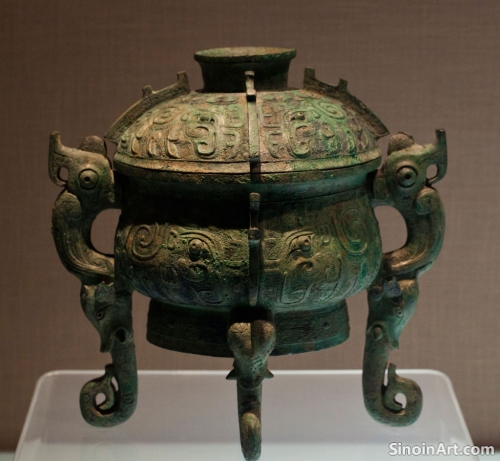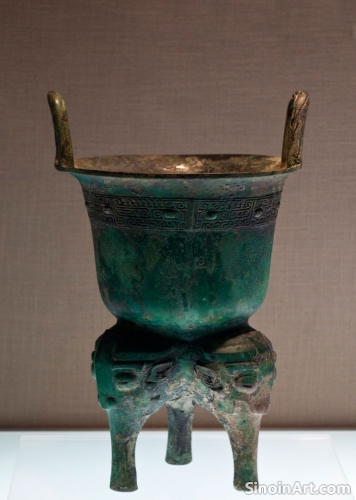The Use of Bronze in Ancient Chinese Musical Instruments: Exploring Tonality and Harmony
|
Beyond their aesthetic qualities, bronze musical instruments in ancient China were carefully designed to produce specific tones, harmonies, and musical scales, reflecting the sophisticated understanding of acoustics and music theory that existed at the time. The study of these instruments helps to reveal both the musical practices and also the scientific knowledge of the era. The complex combination of artistic design and scientific understanding was a hallmark of the art of the time.  The careful casting and tuning of bronze bells, chimes, and drums required a deep understanding of the properties of metal and the ways in which different shapes and sizes could be used to produce varying pitches and timbres. The careful attention to the tuning of these instruments helped to show the scientific and technical expertise of the time. The level of skill in metalworking and the understanding of acoustics demonstrate a high degree of technological sophistication.  The arrangement of bronze bells in sets, known as bianzhong, allowed for the performance of complex musical compositions, incorporating both melodic and harmonic elements. The creation of these elaborate instruments was also a testament to the high value placed on music in ancient China. These sets of bells were powerful status symbols, and they were also powerful tools for creating a more engaging ritual experience.  The exploration of tonality and harmony through bronze instruments also reflects a desire to connect with the natural order of the universe, with music often seen as a way to harmonize human experience with the cosmos. The understanding of harmony in music also had strong connections with philosophical and religious beliefs. The interplay between music and cosmology is a key element in ancient Chinese culture. |
Tag : bronze musical instruments, Chinese music theory, ancient tuning, harmony, bianzhong bells
Related information
- The Conservation of Large Scale Bronze Sculptures: Challenges and Techniques
- The Impact of Bronze Ware on Ancient Chinese Ritual Practices: Sacrifices, Offerings, and Performances
- The Influence of Bronze Ware on Ancient Chinese Clothing and Adornment: Jewelry, Belt Hooks, and Ornaments
- Bronze Ware and the Development of Ancient Chinese Astronomy: Instruments, Charts, and Cosmological Beliefs
- Bronze Ware and Ancient Chinese Beliefs About the Afterlife: Providing for the Journey and Eternal Life
This article discusses the challenges and techniques involved in the conservation of large-scale bronze sculptures, highlighting the issues of deterioration, the need for specialized interventions, and the importance of long-term preservation efforts.
This article explores the impact of bronze ware on ancient Chinese ritual practices, highlighting their use in sacrifices, offerings, and performances, and demonstrating their importance in connecting the earthly world with the realms of gods and spirits.
This article explores the use of bronze in ancient Chinese clothing and adornment, highlighting the creation of jewelry, belt hooks, buckles, and other decorative elements, and demonstrating the integration of art, fashion, and social expression.
This article explores the interplay of bronze ware and ancient Chinese astronomy, highlighting the creation of observational tools, the symbolic representation of celestial bodies, and how bronze helped to express ancient beliefs about the universe.
This article explores the use of bronze ware in ancient Chinese tombs, highlighting its role in providing for the deceased's journey into the afterlife, offering protection, and reflecting beliefs about continuity and eternal existence.